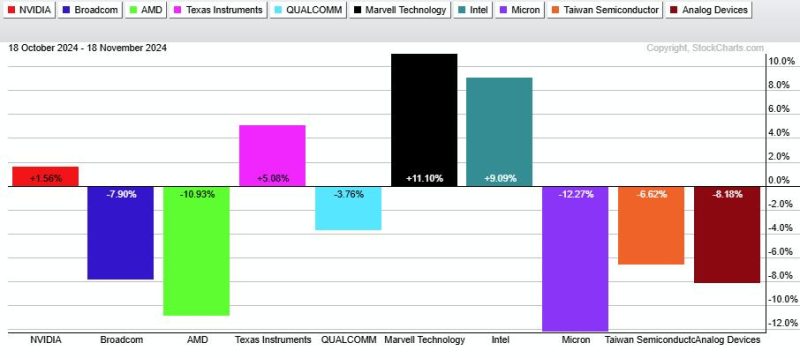The semiconductor industry plays a vital role in the global economy, powering the devices and technologies that have become essential in our daily lives. Within the semiconductor sector, exchange-traded funds (ETFs) have gained popularity as a convenient way for investors to gain exposure to the industry. Two prominent semiconductor ETFs, SMH and SOXX, have been closely watched by market participants for their performance during challenging times.
A key observation in relation to these two ETFs is the difference in their performance amid market volatility and economic uncertainties. The iShares PHLX Semiconductor ETF (SOXX) and the VanEck Vectors Semiconductor ETF (SMH) have exhibited varying levels of resilience during periods of market turbulence, with SMH notably holding up better than SOXX.
One contributing factor to SMH’s comparatively better performance could be attributed to its diversified holdings within the semiconductor space. SMH’s portfolio includes a mix of large-cap and mid-cap semiconductor companies, offering investors exposure to a broader range of semiconductor subsectors. This diversification may provide a level of protection during market downturns by spreading risk across various segments of the industry.
In contrast, SOXX is more concentrated in its holdings, with a heavier focus on large-cap semiconductor companies. While this concentration allows for more direct exposure to industry leaders, it also makes the ETF more susceptible to the performance of a handful of companies. During times of heightened market volatility or negative news impacting specific companies, a concentrated portfolio like SOXX may experience more pronounced fluctuations.
Furthermore, differences in the weighting methodology of SMH and SOXX could also be influencing their performance divergence. SMH follows a modified market-cap weighting scheme, which can result in a more evenly spread allocation across its holdings. On the other hand, SOXX employs a traditional market-cap weighting methodology, where larger companies have a more significant impact on the ETF’s performance.
Another significant aspect to consider when evaluating the performance of SMH and SOXX is their exposure to global supply chain dynamics and geopolitical factors. The semiconductor industry is highly globalized, with companies sourcing materials and components from various countries and regions. Any disruptions in the global supply chain, whether due to trade tensions, natural disasters, or other factors, could impact the performance of semiconductor companies and, by extension, the ETFs that hold these companies.
In conclusion, while both SMH and SOXX offer investors exposure to the semiconductor industry, the differences in their portfolio composition, weighting methodologies, and exposure to external factors may explain why SMH has held up better than SOXX during challenging market conditions. Investors seeking to invest in the semiconductor sector through ETFs should carefully consider these factors and conduct thorough research to determine which ETF aligns with their investment goals and risk tolerance.












